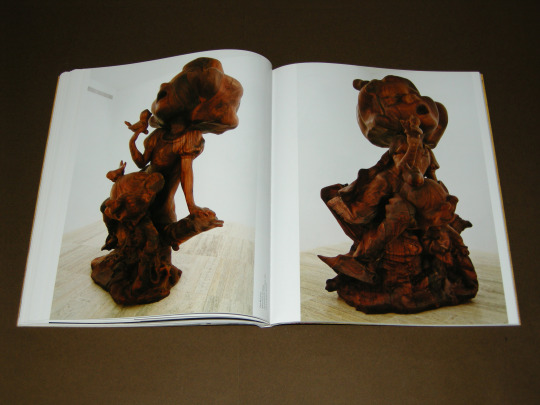#paul mccarthy sculpture
Photo

A Weekend in Munich
Snow and snail · January 2023
56 notes
·
View notes
Text

Paul McCarthy
#paul mccarthy#contemporary sculpture#sculpture#santa claus#christmas#art#artwork#fine art#fineart#contemporary artwork#new contemporary#art contemporary#contemporaryart#art contemporain#contemporary art
1 note
·
View note
Text

Paul McCarthy, White Snow Dwarf (Sleepy) (2010)
0 notes
Text
SET ONE - ROUND ONE - MATCH TWO
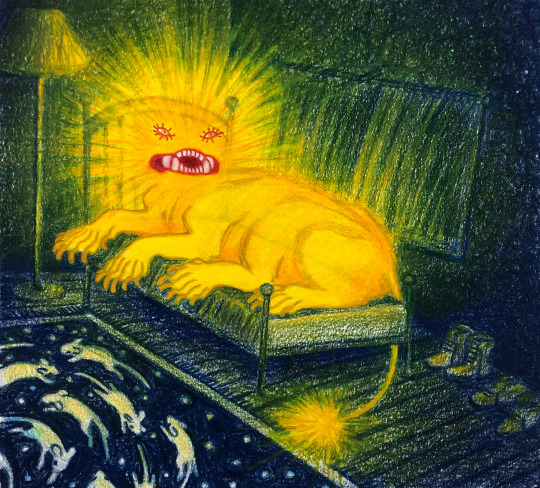
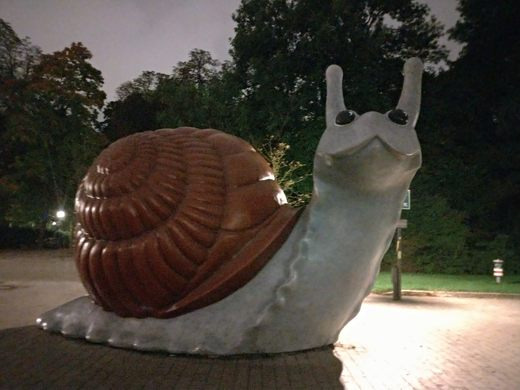
"Untitled" (2020 - ink-the-artist) / "Sweet Brown Snail" (2002 - Jason Rhoades and Paul McCarthy)
UNTITLED: I love everything by this artist, but this one is a real favorite of mine because I love the contrast of colors, I love the way the light radiates from the creature, and I love how it looks both a little creepy and (to me) a little comforting somehow. Maybe it's the color pencils that make it feel very nostalgic. (marwamarwa)
SWEET BROWN SNAIL: its a large public sculpture of a snail that looks like it came out of a childrens picture book. I dont think this one has any chance in the tournament as i am sure most art work here is serious and deals with big topics. but i love this freaking snail. i want to climb on its shell and head. It looks so friendly. it makes me think how despite how hard and horrible life and the world sometimes feels, there is good. (anonymous)
("The angel came to me in a fever hallucination, perched upon my bed as I returned from the bathroom." is a piece by a Russian tumblr artist! The piece and the artist is hyperlinked above. This piece is a coloured pencil drawing and was done on November 16 of 2020!
"Sweet Brown Snail" is a public art installation done by Jason Rhoades and Paul McCarthy. It's a two meter tall fiberglass sculpture located in Bavariapark, Munich.)
136 notes
·
View notes
Text
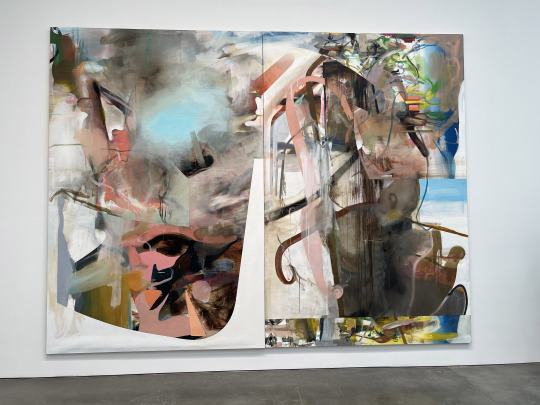
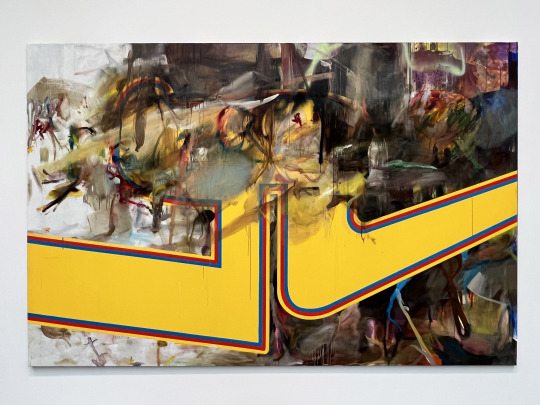
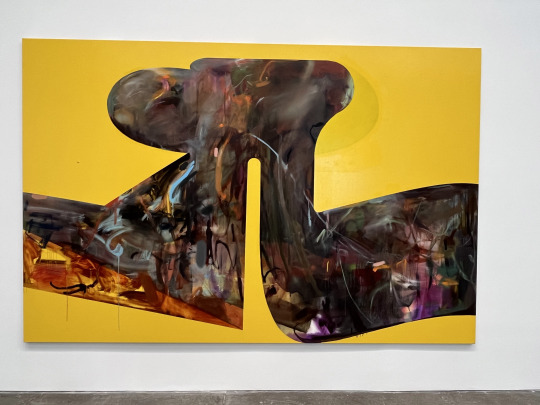
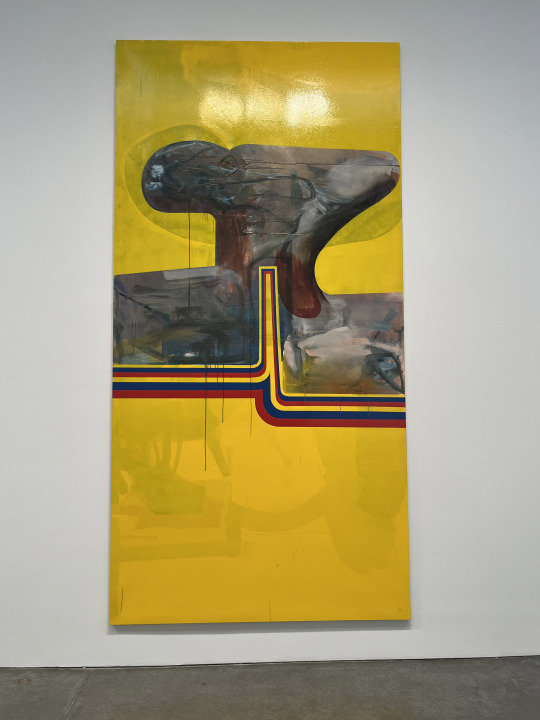
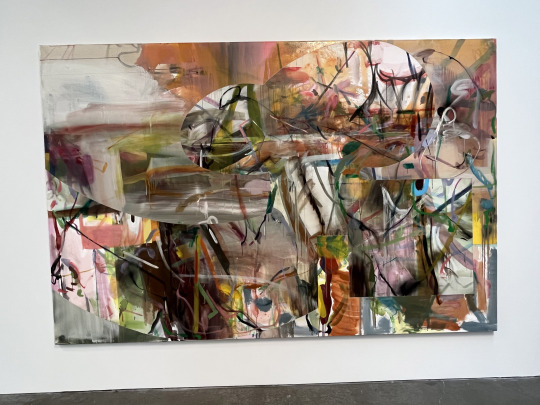
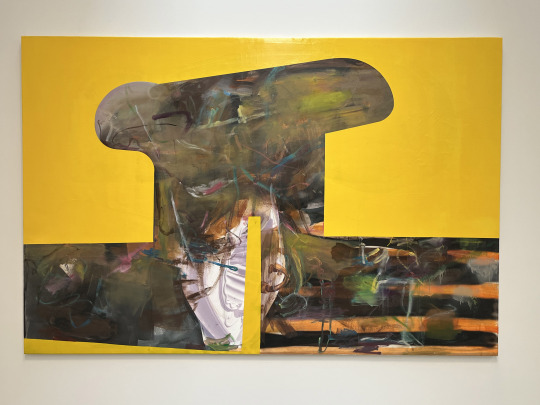


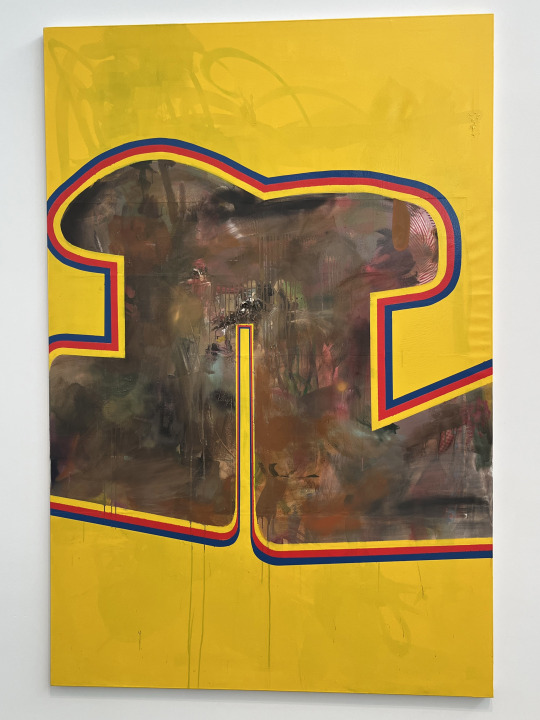

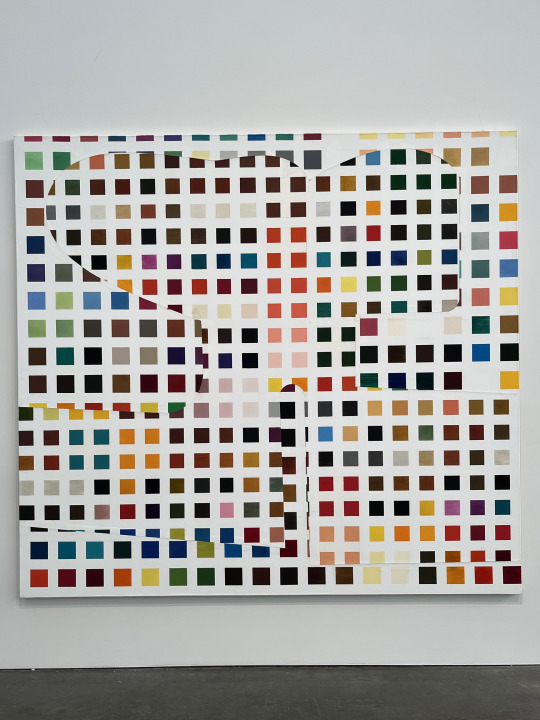
Albert Oehlen's monumental paintings at Gagosian. They are displayed with Paul McCarthy sculptures which are probably too edgy for Tumblr's TOS!
27 notes
·
View notes
Photo
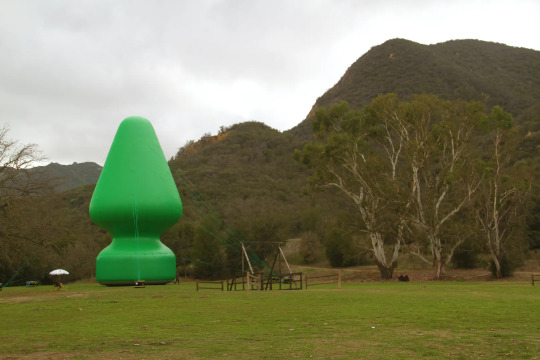
Paul McCarthy sculpture entitled “The Tree” on display at Paramount Ranch, California. The Tree is inflatable. If it resembles something else to you, besides a tree, many other art enthsiasts have made the same observation.
28 notes
·
View notes
Text
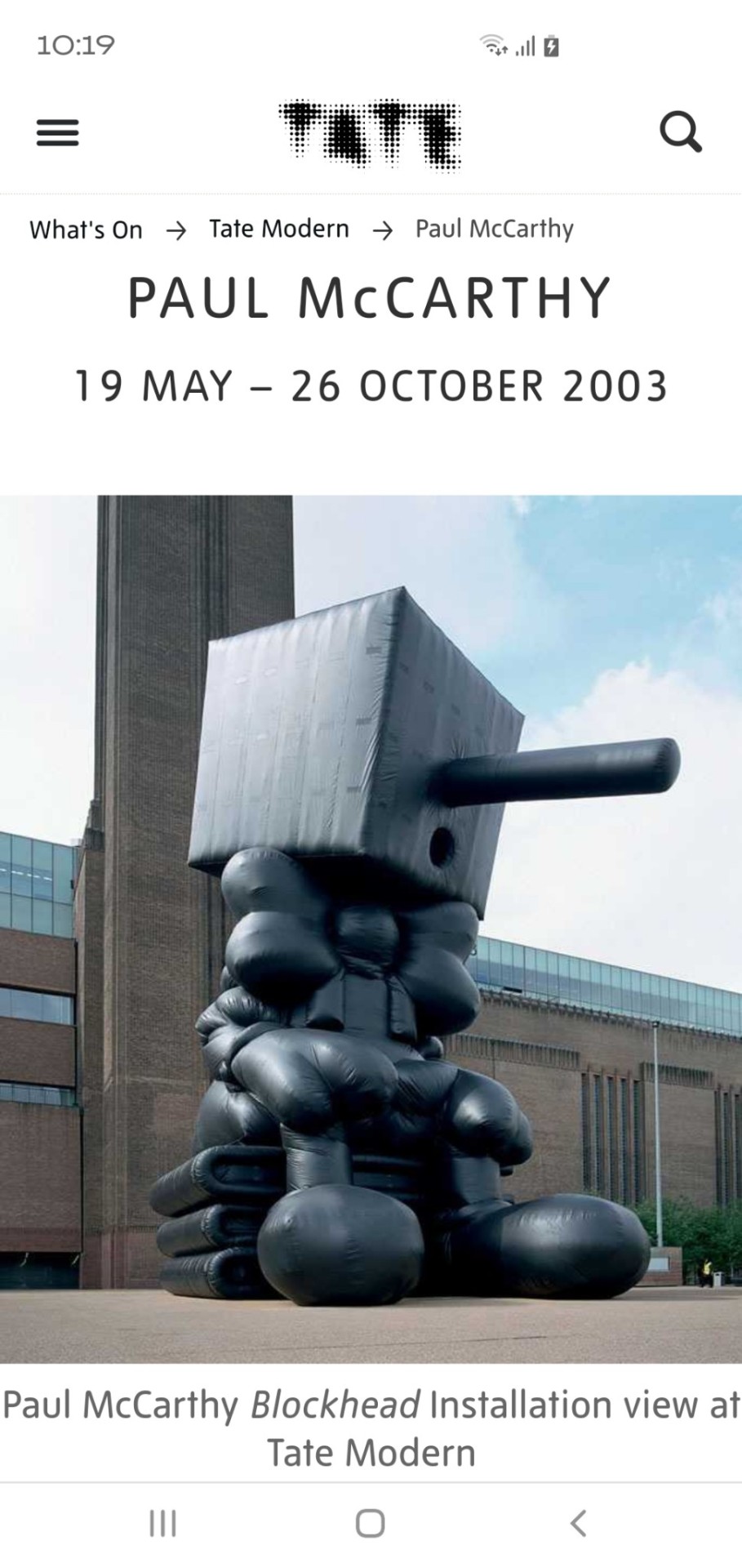
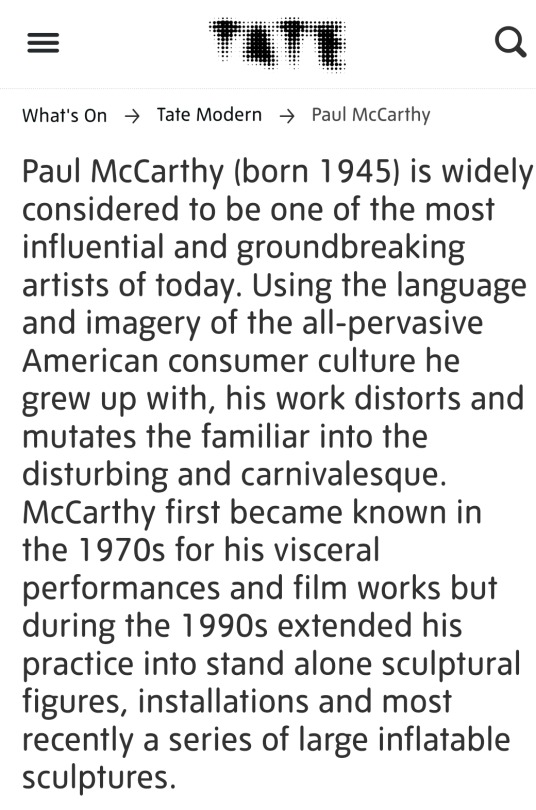

youtube
On researching Paul Mccarthy. I was inspired to see his works with large scale sculptures made with plastic inflatables.
2 notes
·
View notes
Text
Reading Response #3
Lea Collet; Introduction to Video Art
Collet takes an expansive approach to the ever evolving works classified as video art. Breaking the genre into subsets and the significant creators to prop up her delineations. Her writing does a fantastic job at looking at just innovative and exploratory video based artifacts can be. From the work of Bruce Nauman in the 60’s working off simple repetitive movements and the tense sounds of a metronome to the installations of Dara Birnbaum exquisitely crafted that use screens as both conveyance an mediums in their own right. As with most forms of visual art some immediately capture my attention while others I’d just assume stroll past without much thought. Being a kid of the MTV sphere, in its original manifestation, the combinations of music and moving images, I’m pulled towards magnetically. The piece featured in this article by Arthur Jafa captivated me and I watched it multiple times. His use of both still, moving images, pop culture and historical references, paint both familiar and alien landscapes. A world that I feel to know and then only able look at from a undoubtably outside position that carry’s a sense of shame and sadness, while marked with points of joy. Additionally the works of Eulalia Valldosera and Danielle Dean where props and cast light create the sculptural silhouettes that define the piece and push the mode of video beyond your initial dispositions. Throughout all the examples that Collet examines it is the pieces that use both screen and space to create experience and the marriage of music and movement with message that I found the most gravitating. Trying to find a voice within a foreign landscape, using both technology and implement that I find foreign are lighting my brain up like a Griswold Christmas tree and am excited to find a means of expressing my practice through video .
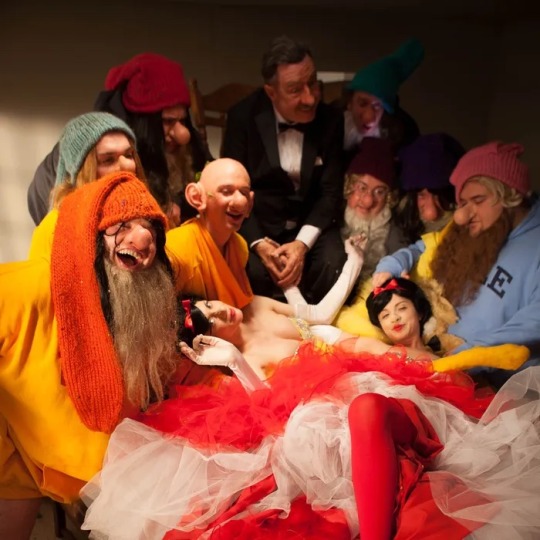
Paul McCarthy; I don’t really jive with his video work as much as his other pieces I had to mention him.

Arthur Jafa

Ulysses Jenkins
4 notes
·
View notes
Text
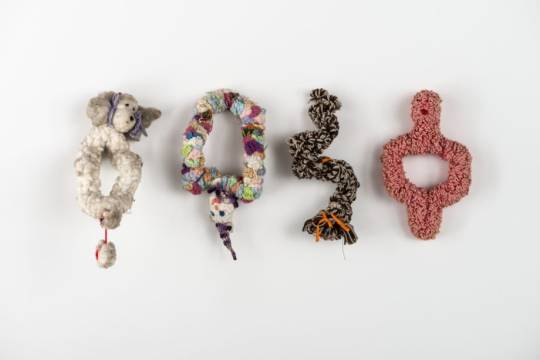


Exposition Art Blog Michael "Mike" Kelley
Michael "Mike" Kelley (1954 - 2012) was an American artist. His work involved found objects, textile banners, drawings, assemblage, collage, performance and video. He often worked collaboratively and had produced projects with artists Paul McCarthy, Tony Oursler and John Miller. Writing in The New York Times, in 2012, Holland Cotter described the artist as "one of the most influential American artists of the past quarter century and a pungent commentator on American class, popular culture and youthful rebellion Kelley gained recognition in the 1980s for his work with children's soft toys and other found materials. With these materials, he examined popular culture, memories and fragmented narratives. Children's toys also function in Kelley's work as a satirical metaphor. Deodorized Central Mass with Satellites (1991–99) consists of suspended balls created from discarded, brightly coloured toys. By transforming children's toys into serious sculpture, Kelley visualised a darker side to the American dream's endorsement of excessive consumption and reckless luxury collecting, and intermingled the 'low' and the 'high' of American culture. He also deodorised his suspended sculptures, mocking America's selective amnesia of unpleasant realities.
More
#Mike#Michael Kelley#american artists#american culture#art#artistic#contemporary art#culture#visual culture#visual art#sculpture#textiles#performance#pop art#art blog#contemorary art#blog#exposition art blog
8 notes
·
View notes
Text
157
Monday I wake up late and A tells me I was talking in my sleep. “Do you just want me to leave?”, I said, apparently. A says he tried to have a back and forth with me but quickly learned I was not conscious. I don’t tell him I dreamt I was a hermaphrodite. I walk out to the kitchen to get coffee half naked and walk back in to the bedroom when I see A’s cleaner. A does a zoom with the NY Times and then goes to a vampire weekend music video shoot and I go to get coffee from Intelligentsia, coconut water from Erewhon, and walk for as long as I can in the sun before calling a car to take me to the Museum Of Death. I am marching up a depressing avenue when I hear my own name screamed from a parked car. It is C, idling and panicking, and we are both gasping at how eerie it is to run into each other on a random street in such a large city. Our friendship, as has been documented here, has been on the rocks for a year, but I get in the car to watch her make a decision about which Urgent Care clinic to seek medical testing in. J says he is running late to meet me at the Museum Of Death, so I spend the latter part of the morning finding C somewhere safe to heal what ails her, rapping on the plastic screen that separates sick people from the Urgent Care receptionists, and shitting my brains out at a Thai restaurant as I mentioned in my previous entry. C is called in and I leave her to it, wondering if this was the catastrophe we needed to bring us together again. I take a car to the museum and J meets me after parking his Jeep and we spend close to two hours looking at pictures of decapitated and maimed and otherwise-murdered bodies from the last 100 years. There is a strict no-photos policy that feels entirely justified, given this collection puts even the most depraved Reddit thread to shame in terms of gore. I watch a video on how to perform an autopsy and how to embalm a body. I see Sharon Tate’s maimed face and chest and the guitar Charles Manson played in prison with a broken D string. I see the rape of Nanking and books on cannibalism and people’s crotches where the genitals have been sawn off and taxidermied chihuahuas and Auschwitz stuff and a wanted poster for Andrew Cunanan. Even the toilets have a bulletin board of recent deaths, printed cheaply onto white paper. “Death is everywhere”, says the sandwich board at the entrance and exit, and it’s not wrong. We buy t shirts from the gift shop and I talk about sobriety with the retail assistant and he says he likes working at the museum because it reminds him that he’s not dead
J and I go to eat at Sqirl and I see a stupidly handsome man in a wheelchair pass our table. He wheels past several times and stares at me and J asks if I’ve ever had sex with someone in a wheelchair and I say no and he says his friend had sex with someone without arms or legs. We go to Hauser and Wirth and listen to Lana Del Ray, as is our custom when driving together in LA. An ex colleague of J’s lets us in and turns the Jason Rhoades video on for us, an hour long interview with Rhoades when he was still alive talking about the experience of driving in LA. He is driving in the video, nerding out about how different cars were built and why he likes them. Four of his cars are in the gallery, ephemera on their seats. J’s ex colleague says the party line is that Rhoades died of heart complications but that he actually killed himself. We are led up to see a Paul McCarthy sculpture of a gnome. We see the chefs at Hauser and Wirth’s restaurant preparing for the evening’s dinner singing along to Adele
We drive to Erewhon and get a Hailey Bieber sundae which I make the mistake of googling the calorie content of later. I figure it’s important to master dessert and dessert-adjacent foodstuffs, and the only way to do so is to eat them. Eating disorder recovery 101. Thank you, Hailey Bieber, but also Fuck You. I leave J to prepare for his Madonna concert and I walk home and watch a video on YouTube about a woman whose skin fell apart after B-12 shots she didn’t need. She speaks briefly on the dangers of those IV drips you can get in gyms in the US now that are totally unregulated and how every now and then people die from them and I think of my mother telling me, when I got to LA sick, to promise her I wouldn’t get one of those IVs. “And no B-12 shots”, she wrote
A eventually returns, exasperated by how disorganised the video shoot was. I tell him it’s a miracle anything ever gets made. He lies on the bed and we FaceTime with A (other A) and make a dinner plan. I pick a restaurant that I know R eats at regularly but hope in my heart that Monday night is one night he chooses not to go there. A (other A) arrives before us and says that 1. The outdoor seating is too cold and 2. That R is in fact at the bar, waiting on a date. We reroute to sushi at Hama and wait patiently for a table to open up. I eat too much ginger and immediately get a stomach ache. It’s not what I imagined for my last night in the city, but it is what I get. Plus A and A are the only people I would want to spend it with. I smoke outside afterwards and A goes to kiss me and I tell him my breath is gross and he kisses me anyway while I pinch his nose shut
0 notes
Text
Paul McCarthy is an American contemporary artist working across media in performance, sculpture, and film. Inspired by American popular culture, lewd sexual innuendo, and the work of Joseph Beuys, McCarthy constructs complicated critiques of consumerism and art. “I had this thing about exposing the interior of the body,” the artist has said, “the orifices leading into the body, and what the interior was, and the taboos of the interior.” His work aims to make his audience feel uncomfortable and often succeeds in stirring controversy
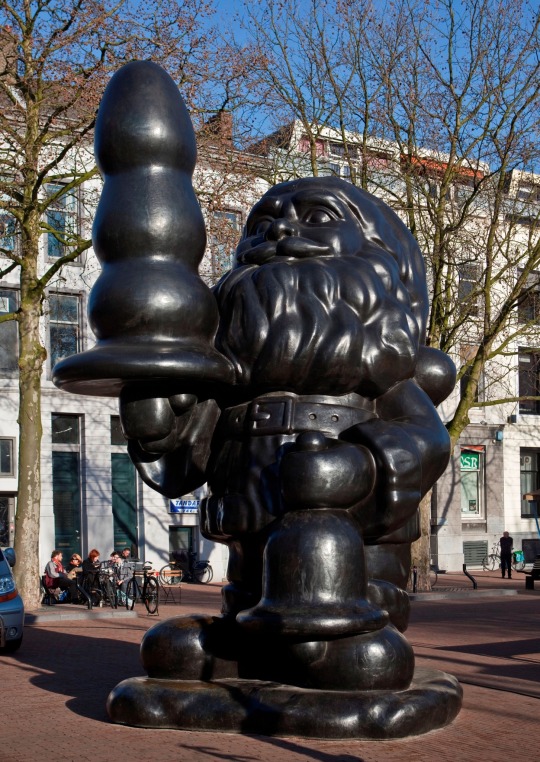
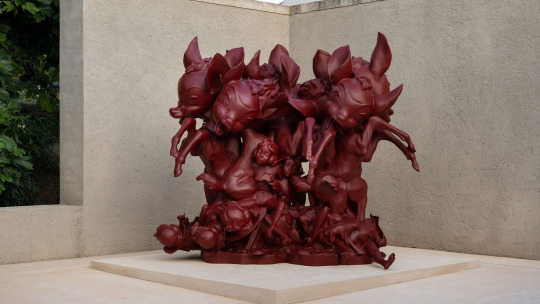
The reason I find interest in Paul’s work is because of how graphic it is and how gross and uncomfortable it makes me feel
I also took these books by Paul out of the library after talking with Sylvia

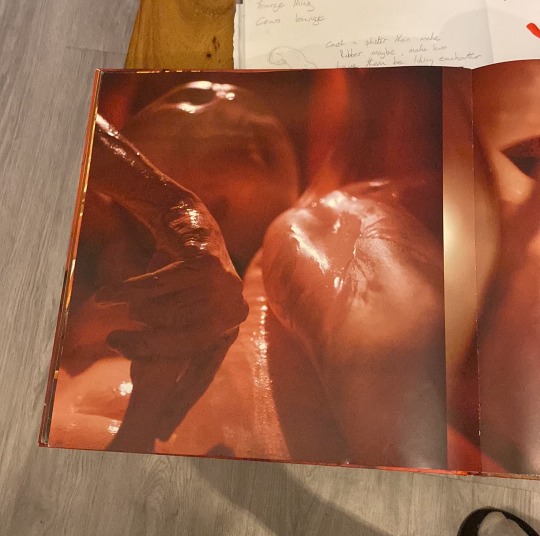
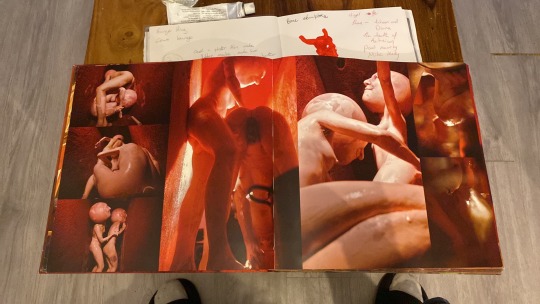
Bunker basement is definitely my favorite as it’s just so buzz at and weird but so appealing the gross wet feeling of it all is quite appalling yet beautiful
1 note
·
View note
Text
Lecture: Art and Humour (by Chris Dolman) (22.8.23)
Since Ancient Greece (comic poets), humour has been used to share divergent opinions or raise awareness on certain issues/topics.
Sigmund Freud theorised the transcendent power of humour as a “defence against potential suffering”.
Irony, caricature, parody, taboos, dark comedy, satire and innuendos have been used by artists to address wider concerns
In other words, comedy has been used as a means to disrupt authority/the mainstream through disguising radical opinions with playful behaviour, and/or the provocation of laughter.
Caricatures aim to ‘exaggerate’, primarily as a means of satire (of course, this has been and continues to be a double-edged sword when it comes to humour and art throughout history for various reasons).
Examples: Leonardo d Vinci’s Five Grotesque heads, and three heads (1510-1520)
Dadaism aimed to expose the horrific nature of war (WWI), and articulate the absurd (and nationalistic) justifications politicians made for WWI.
Example: Raoul Hausmann’s The Art Critic (1919)
Puns can be presented verbally and visually, as is the case in Duchamp’s readymade sculptures.
Self-deprecation is another form of humour, as presented within art.
Example: any of Martin Kippenberg’s self-portraits
Humour can be used to critique institutions, mainstream societal/political ideas and/or popular culture/media (examples below).
Helen Johnson’s work exposes and mocks the colonial narratives (from Britain) Australia’s history is associated with.
https://www.youtube.com/watch?v=5XvgXRnk_HM
Alex Da Corte’s work explores the nuances and impacts of popular culture, media and consumerism on American culture and society.
Paul McCarthy’s absurd works play on popular myths and ideas, merging fantasy and reality (see his short film Painter (1995) below).
https://www.youtube.com/watch?v=-fw4gYWkXgo
0 notes
Text
Chris Burden's bridges
Around the time that I first moved to London, the UK's museums were made free to all. Tate Modern had just opened—a couple of years later the Baltic opened in Gateshead. It was the time of the New Labour government, of Sure Start and many other enlightened policies. Free access to art museums joined up neatly with the London Underground's policy of commissioning art. There was a general sense (which I completely bought into) that art was beneficial, part and parcel of city life, a "merit good", and worth paying attention to.
A more cynical observer would have seen this as bourgeois, bien pensant nonsense. The activity of engaging with art could be reduced, in those dismissive eyes, to posing at the Tate in the mode of Simon Schama. Julian Barnes' 1987 novel Metroland contains the following paragraph:
Our reason for constantly visiting the Gallery was straight-forward. We agreed—indeed, no sane friend of ours would bother to argue—that Art was the most important thing in life, the constant to which one could be unfailingly devoted and which would never cease to reward; more crucially, it was the stuff whose effect on those exposed to it was ameliorative. It made people not just fitter for friendship and more civilised (we saw the circularity of that), but better—kinder, wiser, nicer, more peaceful, more active, more sensitive. If it didn't, what good was it? Why not just go and suck cornets instead? Ex hypothesi (as we would have said, or indeed ex vero), the moment someone perceives a work of art he is in some way improved. It seemed quite reasonable to expect that the process could be observed.
This exalted view of art holds that the museum is a restorative place, the lungs of the city (Bataille), a place where the dust of everyday life is washed away from the soul (Picasso).
One aspect of the London art scene that made it appealing to me was that it looked to America. The English artist Tacita Dean had an exhibition at the Tate in 2001 which, as well as featuring lighthouses (a personal favourite of mine) involved a sound art piece about a trip to Robert Smithson's Spiral Jetty in Utah. In 2003 Paul McCarthy put huge, disturbing inflatable sculptures on the riverbank in Bankside, similar to some sculptures I'd seen by him while browsing through an art book. The London art system seemed to be bringing American ideas closer, in the same way that the World Wide Web did. I was an Americanophile and I was drawn to that side of things.
One exhibition which I didn't see in person, but which made a big impression on me, was the opening show at the Baltic. It featured, on the top floor, some very large Meccano models of bridges, including the Tyne Bridge, by the American artist Chris Burden.

I reacted to images of these bridges in the same way as I react to Magritte's painting Time Transfixed: I am not sure whether to appreciate them literally or symbolically. Time Transfixed (1938) depicts a fireplace from which an express steam locomotive is emerging. The locomotive looks small relative to the fireplace, but there are two ways to interpret this: either it is a miniature (roughly, a 5" gauge live steam model) or the artist is implying some kind of dislocation in spacetime which causes the fireplace and the locomotive to be juxtaposed in one space at different scales. Magritte wrote “I decided to paint the image of a locomotive… In order for its mystery to be evoked, another immediately familiar image without mystery—the image of a dining room fireplace—was joined.” I am not sure whether I get this—whether I sense the mystery the artist wanted to bring out—or whether I am just enthralled by the concrete idea of a miniature steam locomotive. Let's be clear: I am definitely enthralled by miniature locomotives, but that doesn't disqualify me from taking Magritte's point, or Burden's.
The latter's Tyne Bridge is taller than a person, with the roadway at chest height. It is painted in a similar shade of green to the real thing. Not having seen it up close, I can't say how much the detailed design of the original bridge suffers from being reproduced in Meccano. The more traditional architectural forms of the Tyne Bridge's hollow granite towers are rendered in wood.
The movie Paddington 2 portrays the son of the family as the owner of a large "toy" live steam locomotive, comparable to the engine which appears in Time Transfixed. It is part of the film's representation of cosy, idealized, heritage-friendly London cosmopolitanism. Burden's work, in general, does not share this soft, romanticised view of the world. The scale of his Meccano construction is intended to awe. There are no concessions to conventional aesthetics in his sculpture: it is unadorned: maximally masculine and hard-edged.
Burden made a name for himself in the 70s, in Los Angeles, with a series of self-destructive performance pieces, which included having a friend shoot him in the arm. It was only after becoming a prestigious performance artist that he parlayed his fame into a quieter career making large objects which related to engineering and architecture. In his Beam Drop of 1984, steel I-beams were hoisted up by a crane and then dropped, one by one, into a pit filled with wet concrete. The dramatic action of ends of the beams lancing into the mushy cement, and their clangorous contacts with previously dropped pieces of steel, substituted for the real and irrational violent effects of his previous work.
The work of putting together huge model bridges out of Meccano and Erector set parts was taken on by Burden's studio. The artist commented that, towards the end of one project, the price of the antique construction set parts had started to increase: he had been buying up a significant fraction the whole world's existing supply and the parts had become rarer. These sculptures are not cheap: few sculptures are.
The value of a work of art is usually tied to its rarity. Early in his career, Burden ensured his reputation by seldom advertising his performances in advance. Thus, having attended a genuine Chris Burden event became something rare, something to brag about. After having moving into more conventional object-making, Burden quipped “Stuff here [his home and studio] flows pretty freely between being functional and being elevated to exalted art status.” If it takes a kind of consecration to turn something into art (and most theorists, such as Bourdieu, would say that it does) then Burden found himself ordained, in a position of being able to self-certify the artistic value of objects he acquired.
For the art audience, sincerely trying to make sense of an expensive artwork such as Burden's Tyne Bridge, the rarity and pecuniary value is a troubling point. Free access to museums meant that the experience of viewing the work cost the public nothing. Yet it is difficult not to see this state of affairs as analogous to a palace economy, in which wealth flows in to a central ruler, and is then redistributed to the people at the ruler's discretion. The supposedly beneficial effects of art had to be gained in the same way as a TV license holder claws back value from the national broadcaster—through evanescent experience.
One could imagine Chris Burden selling cheap multiples—individually signed Meccano struts, say—as a way of making his art tangibly accessible to a wide consumerist audience. As far as I know, though, he never issued any multiples. Perhaps one of his huge and intimidating structures being broken down into its tiny individual components and then dispersed would have been too much of an erosion of his concept. A multiple is the absorption of art into capitalism, except when it's free, in which case I suppose it's just the prestige of art dissolving into society and everyday life.
Following the exhibition at Baltic, in 2004 Chris Burden made a work called Tyne Bridge Kit, a one-tonne chest of drawers containing 200,000 green-painted Meccano components. In theory they could be assembled to make a duplicate of his 9½ metre-long Tyne Bridge. What is unsaid is that this is a kit which the individual hobbyist definitely cannot afford, even though the labour-intensive job of assembling it wouldn't be included in the price. I like this piece less than the assembled bridge. I guess I find it jokey and heavy-handed. It's not a distillation of the (successful!) earlier bridge project—if the earlier project hadn't existed this kit would be an even more frustrating object.
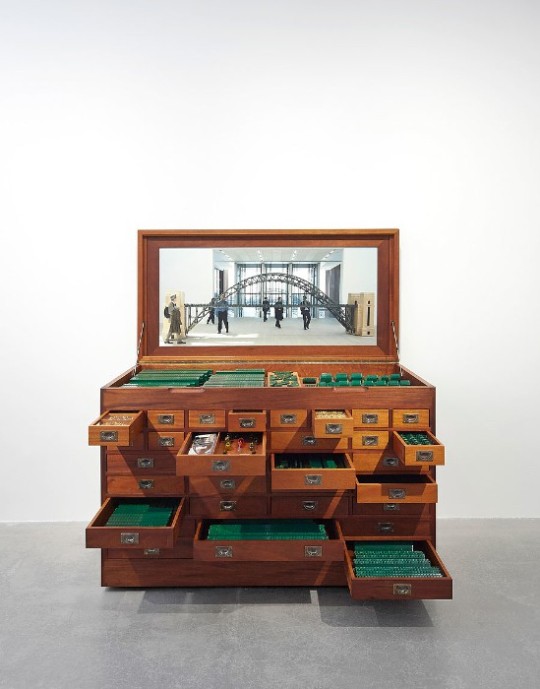
I'm still not sure what I think about Chris Burden's work. Maybe I'm only drawn to his Tyne Bridge model for the wrong reasons, for its practical rather than artistic properties. After several years, I am none the wiser about much of his other work, both the performances and the objects. Its meaning eludes me. He himself said "My main, No. 1 rule is, don’t worry what it means—other people will figure that out—just make sure that it looks neat." So maybe I am getting what there is to be got.
0 notes
Text
Having finally decided to use the production studio instead of room 302, I'm bailing on using the spray and incorporating smell altogether. I dont want to ruin the space for others (including Harry), and I think that better audio quality is way more important.
This does take away from the expanded field aspect of the work, but I still think that I've achieved this through the combination of performance art and a more traditional sense of film. It features a sense of progression like a story would, however there is no clear storyline, and if anything it resembles work more like that of Paul McCarthy, who enacted very full-on and nonsensical performances, similarly filming some of them. Unlike McCarthy though, as stated, I have attempted to expand this approach to art through cutting it up and making it feel more like a traditional film, with multiple different scenes and shots, whilst still maintaining that sense of naturalism that comes from the shaky cam. I did also try to make the substances as realistic as possible and even if my performers aren't eating real poo, they're still eating it off of the floor, and sucking up what they spit out, which is gross enough as is. Because of this, I feel like their performances are still very real in a sense, and reminiscent of work by artist's such as McCarthy. This is also why I am more compelled to refer to them as performers rather than actors. The majority of this process was also spent experimenting with ingredients in the kitchen and so, I often felt like I was engaging with cooking and sculpture more than I was with screen arts. Another obvious sense of expanding the field also lies in my expansion of the video through the space in which I will present. Specifically showing in the production Studio, will boost the immersion through its all encompassing surround sound, making the audience way more uncomfortable than if they were to just watch it through their computers.
0 notes
